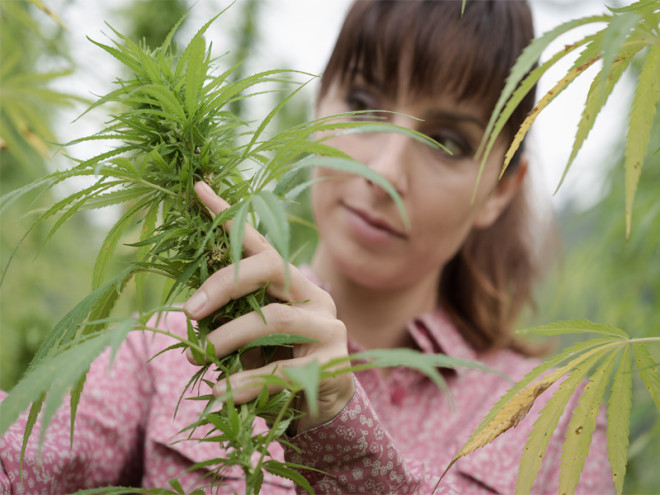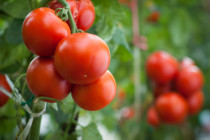If cotton is known as the “fabric of our lives,” then perhaps hemp is poised to be the fabric of our future, particularly in the United States where hemp plants are finally growing in American soil after an almost 80-year hiatus. While hemp is indeed a variant of the herb Cannabis, it has a much lower concentration of tetrahydrocannabinol (THC), which is the psychoactive component of marijuana.
Cultivation of hemp became illegal in the United States in 1937, but on February 7, 2014, President Obama removed hemp –that is, hemp grown for research purposes – from the Controlled Substances Act. Many are viewing this change as a tremendous opportunity for American farmers who may soon benefit by being able to grow and sell hemp for the first time in close to a century. Some proponents of hemp farming argue it would not only be a green, climate change-friendly alternative to many conventional crops, but it also stands to be a rather lucrative venture – one that could substantially revive the farming industry in the U.S.
Currently, Canada’s hemp production amounts to profits of almost $1 billion a year, which works out to approximately $250 net profit per acre. For comparison’s sake, soy, which is considered a substantial crop in the United States, averaged approximately $71 per acre in 2014. Demand for products like omega-balanced hempseed oil has largely driven the Canadian hemp market, but hemp has a number of applications such as cloth, paper, food, wax, resin, building materials, fuel and plastic that make it somewhat of an agricultural all-star. In fact, some car manufacturers are using a mixture of fiberglass, hemp fibre, kenaf, and flax to make composite panels for automobiles, including BMW, Honda, Porsche and Lotus.
Ryan Loflin, a 41-year-old farmer in the town of Springfield, Colorado, has high hopes that hemp will help save his family’s farm:
“It takes half the water that wheat does and provides four times the income. Hemp is going to revive farming families in the climate-change era”
In comparison, it takes an average of 1,800 gallons (6,800 litres) to grow enough cotton to make one pair of blue jeans. In addition, cotton agriculture generally requires a high amount of pesticides. According to the Pesticide Action Network, nearly $2.6 billion in pesticides are sprayed on cotton fields each year, which adds up to more than 10% of the total pesticide use and almost 25% of insecticide use in the world. Alternatively, hemp is felt by many to have a significantly reduced environmental and health impact.
- Being quite a hardy plant, hemp can grow in a multitude of conditions with less human intervention like irrigation, pesticide use or fertilizer use.
- Hemp produces as much as three times the amount of usable plant material per acre compared to cotton.
- Compared to other crops, hemp farming can actually improve soil conditions by breaking up soil with its long roots. It is also said to help rid soil of contaminants like heavy metals, solvents, pesticides, and gasoline via a process known as phytoremediation.
- As a fabric, hemp has three to eight times the tensile strength, and four times the warmth and absorbency of cotton.
- Hemp is more efficient than cotton in terms of breathability and wicking away moisture from the skin.
At this stage, the changes made in the 2014 farm bill only authorize hemp seed importation for research purposes. Approximately 20 states, including California, have embraced this change and have implemented legislation that allows the importation of hemp seeds for the purpose of researching different cultivars in order to replenish American seed stocks.
This is necessary to determine which varieties will thrive in certain locales with vastly different climate and soil types. It’s how the hemp industry got its start in Canada in 1998.
While the Drug Enforcement Administration (DEA) has been slow to embrace the changes and has seized a number of seed shipments, including one that was headed for Kentucky’s agricultural department, there is finally evidence of progress in the push to legalize the cultivation of industrial hemp.
There is currently bipartisan support for the Industrial Hemp Farming Act, which was reintroduced just this year by Sen. Ron Wyden (D-Ore.). The Act would allow countrywide commercial hemp cultivation. And with four states (Alaska, Colorado, Oregon, and Washington) decriminalizing cannabis for recreational or medical use, it stands to reason that legalization of the innocuous hemp plant should follow suit.
It’s difficult to know with certainty whether or not cultivation of industrial hemp will revolutionize American farming. But with a multitude of health and environmental benefits, as well as high profit margins, the potential is worth pursuing. And should it prove to become America’s fabric of the future, it’s only fitting that the history of hemp in the U.S. should come full circle — after all, it was on hemp paper that Thomas Jefferson first drafted the Declaration of Independence.
About The Author

- Serial Entrepreneur, Technologist and Inventor my objective is to develop useful products that have a net positive effect in the lives of those that use them and the environment that we live in. CEO of Mission LED Lighting Company Ltd.
- 2017.12.27UncategorizedSaving the World and Saving Money: Green Home Improvements Every Homeowner Should Make
- 2017.01.17Be green & save5 Simple Green New Year Resolutions For 2017
- 2016.11.09LED factsReplacing a 400 HID Lamp for an LED
- 2016.09.26Be green & saveVintage LED Bulbs Make What’s Old New Again





1 Comment